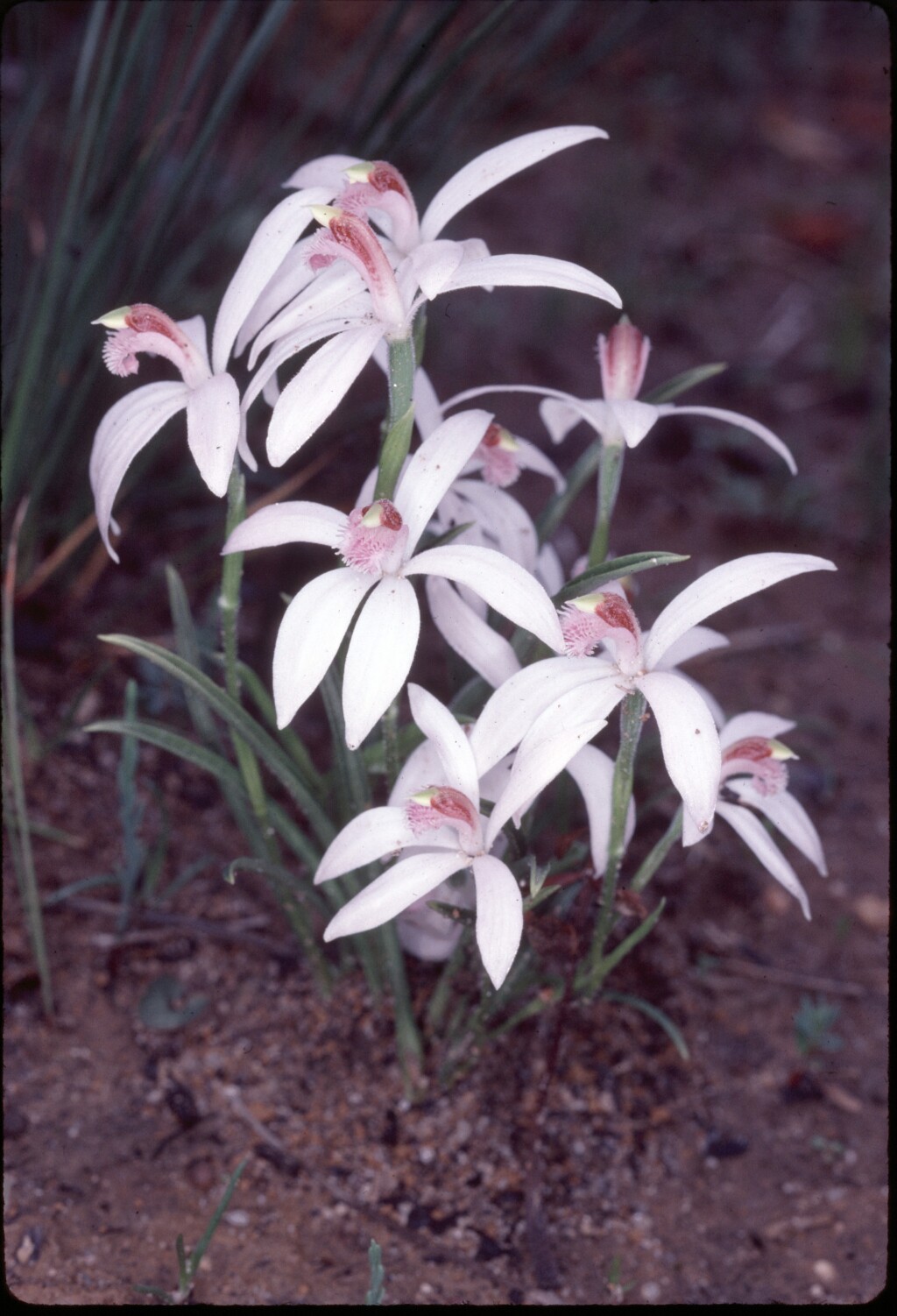Pheladenia deformis
(R.Br.) D.L.Jones & M.A.Clem.Flowering plant slender, 6–15 cm tall. Leaf linear-lanceolate, 4–8 cm long, c. 2–4 mm wide. Flowers solitary, deep blue (rarely pinkish, white or yellow), often with faint sweet fragrance; perianth segments with scattered, minute purple glands on outside; dorsal sepal erect or recurved, elliptic-lanceolate, c. 15 mm long; lateral sepals deflexed, oblique-lanceolate, c. 15–20 mm long; petals spreading, obliquely oblong-lanceolate, subequal to lateral sepals. Labellum constricted towards base, sessile, more or less ovate, obscurely lobed, 10–15 mm long (when flattened), darker than other segments; lateral lobes fringed near tips, their margins otherwise entire; mid-lobe recurved, triangular, dark purple, fringed with toothed, crowded, often slightly clubbed calli, in 4 or 8 irregular rows, not quite extending to extreme tip. Column incurved, winged throughout, broader in upper half, more or less purple with deep purple dots and markings, wings united shortly in front of base; anther with a long acute point. Flowers Aug.–Oct.
LoM, MuM, Wim, GleP, Brid, VVP, VRiv, GipP, OtP, Gold, CVU, GGr, DunT, NIS, EGL, WPro, HSF, HNF, MonT. Widespread and locally abundant in southern and central Victoria, from coastal heathland to dry box forest. Records of the species from the north-east (Beechworth-Tallangatta areas) are of uncertain origin.
Flowering is strongly stimulated by fire the previous season.
Pheladenia deformis is easily recognized by the blue flowers and crowded labellum calli which are linear, and toothed or hairy.
Pheladenia deformis crosses with Glossodia major to form the intergeneric hybrid ×Phelodia tutelata.
Entwisle, T.J. (1994). Orchidaceae. In: Walsh, N.G.; Entwisle, T.J., Flora of Victoria Vol. 2, Ferns and Allied Plants, Conifers and Monocotyledons, pp. 740–901. Inkata Press, Melbourne.
 Spinning
Spinning



